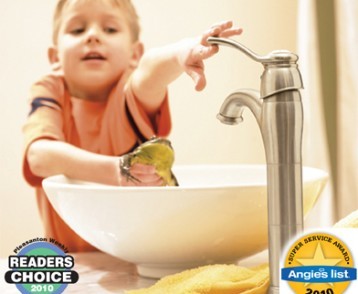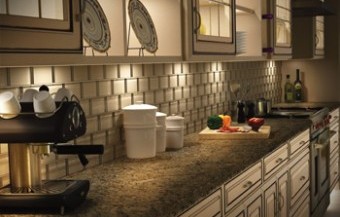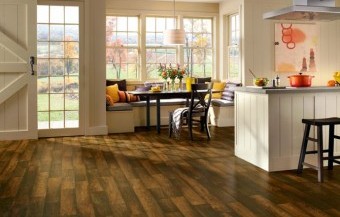



Shopping for the Kitchen Sink
Do your homework first so you know your options for your kitchen remodel.
It’s one of the most used items in your home, but how much do you really know about the kitchen sink? Which materials are the most scratch or stain resistant? Which can withstand hot pots and pans from the oven or stove? Are there certain sinks that will chip and others that won’t? Which sinks perform better – stainless, granite or composite?
Obviously, not all sinks are created equal. While you may be drawn to a sink for its unique shape or style, it’s important to distinguish if it will be able to stand the test of time.
So, how much do you know about buying a sink? “Moen has conducted extensive research including in-aisle surveys with sink shoppers. Most don’t understand the different materials from which each sink is made, the durability of these materials and what the various price points mean,” said Heather Novak, Moen’s Senior Product Manager, Kitchen. “Consumers should research sink options just like they would appliances or anything else they select for a new kitchen. There are many choices and each homeowner must take into account kitchen sink needs for his or her particular home, including style, durability, performance and price.”
Here are some of the advantages and disadvantages of today’s sink choices so you will select the sink that’s right for you.
Stainless Steel
Stainless steel is the most popular kitchen sink style on the market and provides a complementary match to commercial-styled appliances. Today’s offerings include a vast selection of shapes, styles and configurations. Moen’s new Lancelot® Professional Sinks, for example, provide consumers with the sought-after look of a restaurant kitchen, without sacrificing style and functionality for the home. This zero-radius sink, with squared angles rather than soft-curving edges, lends a modern, architectural feel to a kitchen and eliminates a “dirt trap,” making cleaning easier. It also maximizes space in the kitchen with its 10-inch deep bowls.
Overall, stainless steel sinks offer many benefits including resistance to chipping, cracking or peeling. They are available in both undermount and drop-in models. Undermount models are the most appealing to consumers as they provide a seamless transition from the countertop to the sink.
When looking at stainless steel sinks, it’s important to find out the thickness or gauge of the steel, as this is how quality is measured. The lower the gauge number, the thicker the steel and the higher the quality of the sink. So, for instance, an 18-gauge sink is more durable than a 23-gauge model.
Another feature to look for in a stainless sink is sound-deadening ability, or how loud the noise will be when something is dropped into the sink, such as a piece of silverware. Some sinks offer increased sound deadening by using under the sink spray coatings, such as Moen’s SoundSHIELD™, and special sound pads underneath the bowl.
The only disadvantage of a stainless steel sink is it can be prone to scratching and water spotting. To combat this problem, choose a model with a satin finish.
“Although the ‘mirror finish’ may look nice in the showroom, these sinks have a hard time holding up to the normal wear and tear of a kitchen environment,” says Novak. “A sink with a satin finish provides additional protection from scratching and rusting.”
Composite
The use of composite sinks is growing rapidly, but the composite category causes sink shoppers confusion since there are several different types on the market, including popular granite and quartz styles.
Granite Composite
The most durable sink on the market today is granite composite. Thanks to an extremely high density of rock particles at the sink’s surface, these sinks offer superior scratch, chip and heat resistance. MoenStone® Granite, for example, resists scratching, cutting and staining.
“These sinks will weather hot pans, dropped utensils, tomato sauce stains and other harsh conditions beautifully,” noted Beth Allison, Moen’s Wholesale Group Product Manager. “And, they offer heat resistance to 535 degrees Fahrenheit, which means a pan can go from stove to sink without burning or marring the surface.”
Granite-based sinks are available in many different color options and bowl configurations.
Quartz Composite
With a typical combination of 70 percent quartz and 30 percent resin filler, quartz composites can resist everyday cuts, scuffs and dents and can easily stand up to harsh cleaning materials and liquids. However, these sinks are a step below granite-based sinks in terms of wear and durability.
Quartz composite sinks are available in a variety of colors. Since the color is uniform throughout, the material never loses its original color. Pots and pans can usually go right from stove to sink without causing damage.
The best advice? Do your homework before you go sink shopping. You should be able to determine which sink is right for you – and it shouldn’t be a ‘draining’ experience.
For more information about the variety of sinks available today, visit contact the local dealers linked below:









